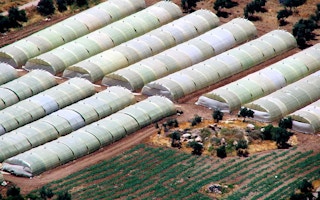The drylands of the world are getting greener, and researchers think it is thanks to higher levels of carbon dioxide in the atmosphere.
In a paradoxical discovery, even as landscapes become increasingly at risk of desertification, they may also look more luxuriant.
Two scientists from Purdue University in Indiana, US, and a researcher in Saudi Arabia report in the journal Scientific Reports that they analysed 45 satellite studies from eight countries to confirm that the drylands of the world are responding to global warming and climate change by getting greener.
Their conclusion is that rising levels of the greenhouse gas that is warming the planet – a consequence of humans’ combustion of fossil fuels over the last two centuries – are also delivering extra fertilisation to plants, so that photosynthesis can function with less water. In turn, this means that more soil water stays in the ground.
Negative feedback
“We know from satellite observations that vegetation is greener than it was in the past,” says Lixin Wang, an Earth scientist from Purdue, and one of the authors of the report. “We now understand why that is occurring, but we don’t necessarily know if it is a good thing or not.”
The observation seems to suggest that nature is delivering what engineers call negative feedback: as the Earth warms because of the rising greenhouse gas levels, so vegetation is responding to grow more vigorously and soak up more carbon.
This has been observed before, but it may not be a good thing because one consequence of climate change is that drylands everywhere – and they are home to around two billion people – are likely to become increasingly parched, with cruel consequences for the world’s poorest people who make up most of those two billion.
Nor is it certain that all drylands will respond with more vigorous growth. For some terrains, ecological devastation could increase.
Some of the greening may be down to a change in the mix of species, with greener invasive plants replacing indigenous species. Shrubs and bushes could be colonising grasslands needed for cattle grazing.
Drylands are not necessarily deserts in the making, but they are defined as zones where the average annual rainfall is less than the potential evaporation. So in a warmer world – the planet’s average temperatures have increased by 1°C in the past century – places already dry should become drier, and dustier.
The satellite data show that parts of the Mediterranean, the Sahel region, the Middle East, northern China, Mongolia and South America are all greener. But between 1960 and 2015, the global average concentrations of CO2 have risen by 27 per cent.
Plants use photosynthesis to convert carbon dioxide to carbon tissue, so the extra fertilisation from the atmosphere remains the best explanation for the mounting greenery.
Water vapour
The extra fertility means that a plant’s stomata conduct lower levels of water vapour into the atmosphere, which means more water stays in the soil, which means there is more for other plants to exploit.
The analysis showed that greater levels of CO2 had a bigger impact on water levels in drylands than it did in the more well-watered places. Soil water in the moister zones increased by 9 per cent. In drylands, it went up by 17 per cent.
So, for the moment, it looks like a case of negative feedback: nature responds to the greenhouse effect by making the world a little more green.
It is not clear, however, that plants can go on damping down the effects of global warming by growing more vigorously. The researchers are cautious: more needs to be done, they say.
“Importantly, the observed response lends weight to the hypothesis that any additional soil water in the root zone is then available to facilitate vegetation growth and greening under enhanced carbon dioxide,” Dr Wang says.
“Future studies using global scale process-based models to quantitatively assess the carbon dioxide impact on soil moisture are needed to further validate the hypothesis.”










